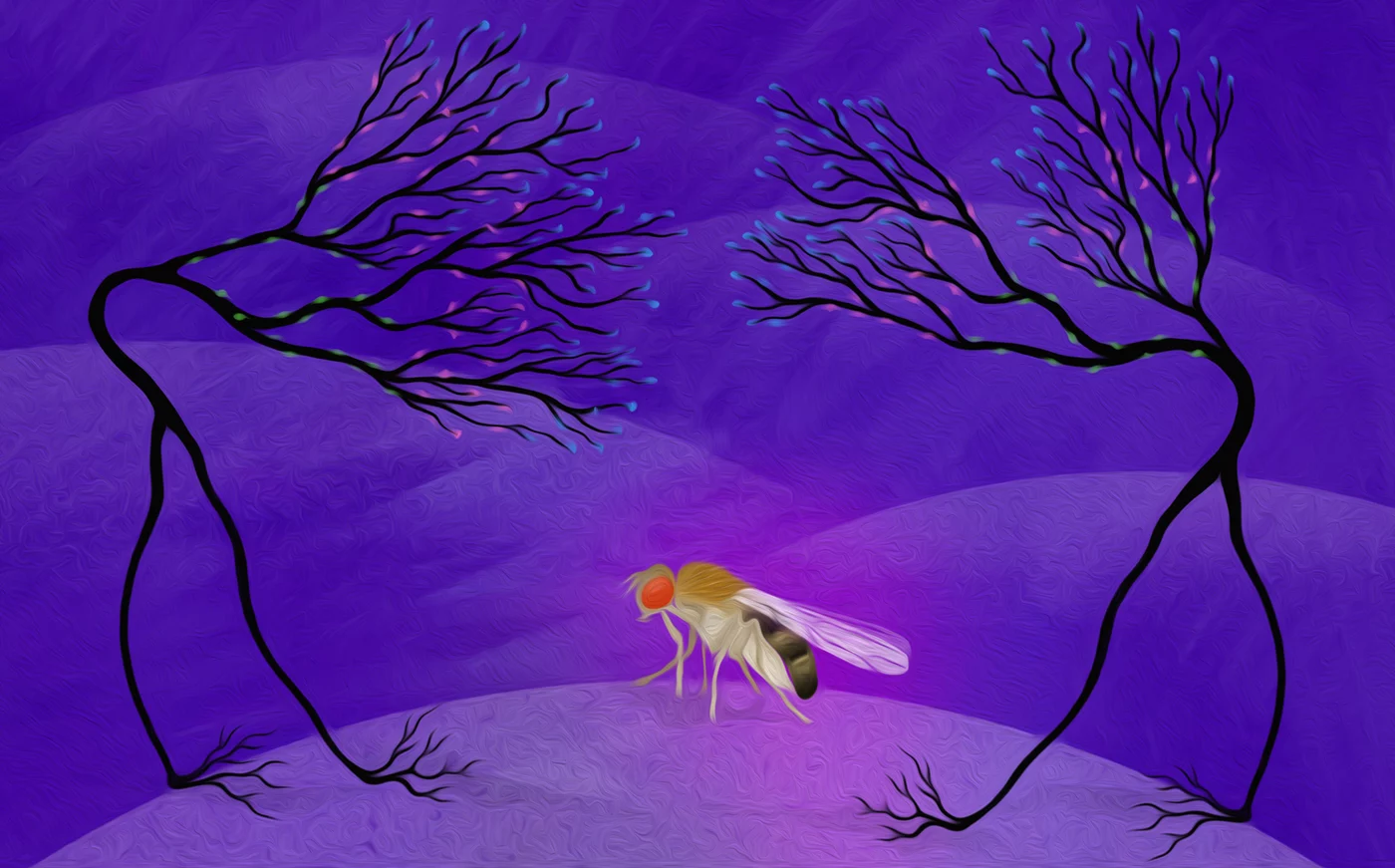The protein dress of a neuron

Where in a nerve cell is a certain receptor protein located? Without an answer to this question, it is difficult to draw firm conclusions about the function of this protein. Two scientists at the Max Planck Institute of Neurobiology developed a method in the fruit fly that marks receptor proteins in selected cells. In this way, they gained new insights into the neuronal mechanisms of motion vision. In addition, the research community receives an innovative tool to label proteins of all kinds.
One of the most fundamental questions in neurobiology is how sensory inputs are processed within the neuronal circuits of the brain. Thereby, it is not only important to understand which neurons are connected via synapses, but also how they communicate with each other. Receptors play a decisive role in this process.
These special proteins sit in the membrane envelope of neurons and specifically at synapses, where they receive incoming signals from other cells. Depending on receptor type and position, they determine how the cells react to incoming information: are they activated or inhibited, and how quickly does this happen? To understand a neural network in its entirety, it is therefore essential to study receptors and their distribution in neurons. However, this is not an easy task.
Some established methods provide little or no information about the distribution of proteins. Other techniques allow the labelling of receptors artificially introduced into cells, but not of naturally occurring ones. Therefore, the PhD students Sandra Fendl and Renee Vieira from Alexander Borst's department used the genetic resources available in the fruit fly Drosophila and developed a method to label proteins.
